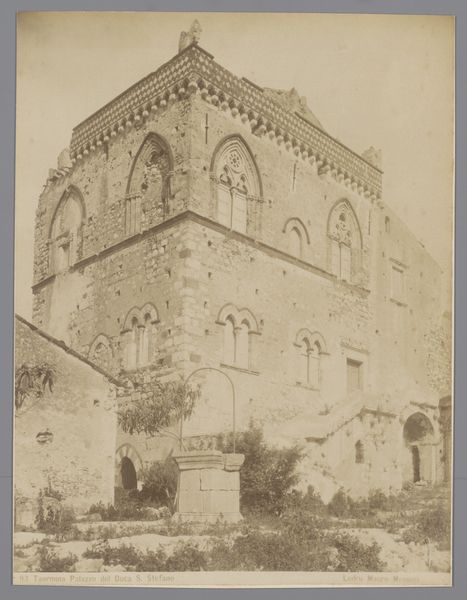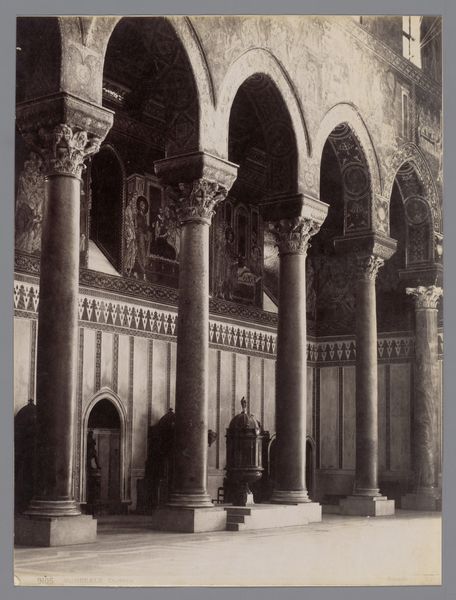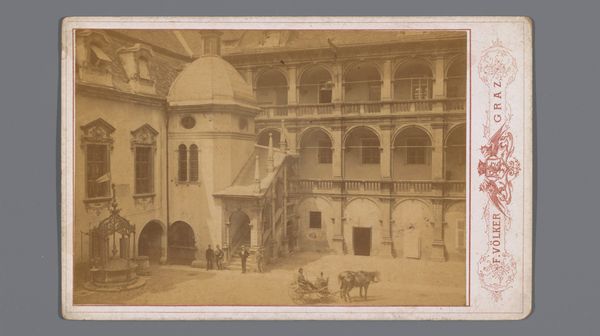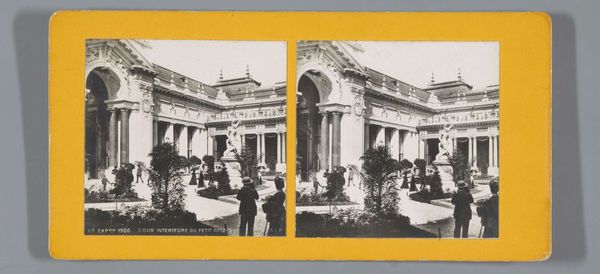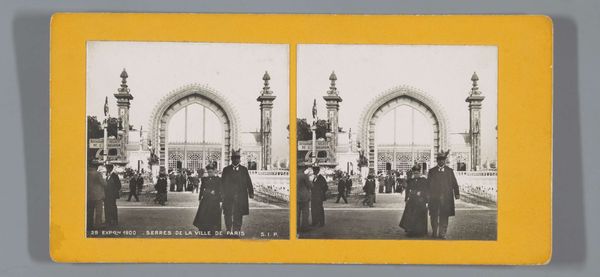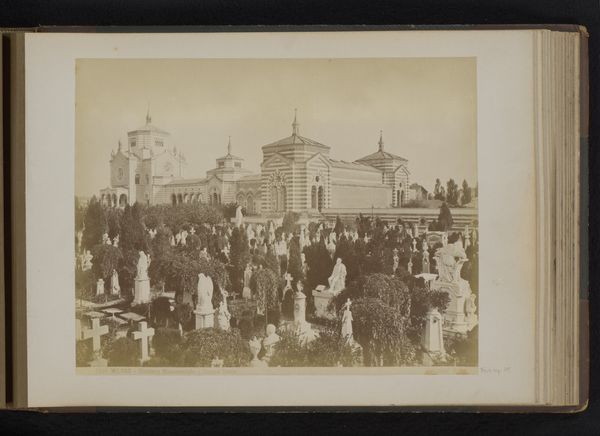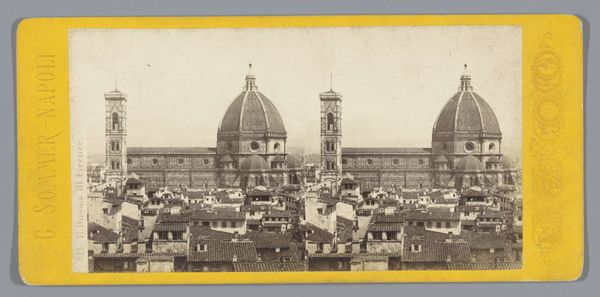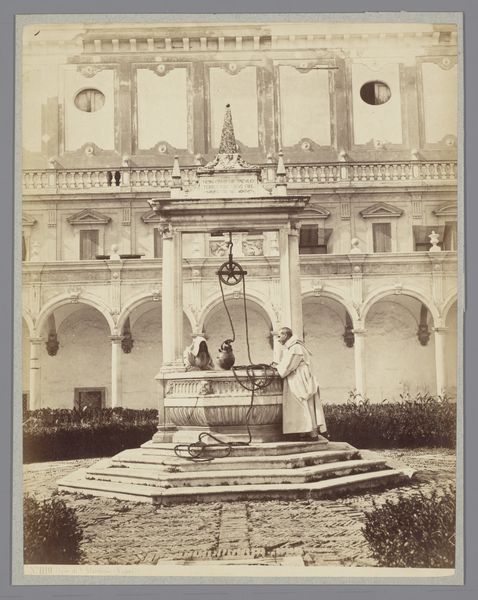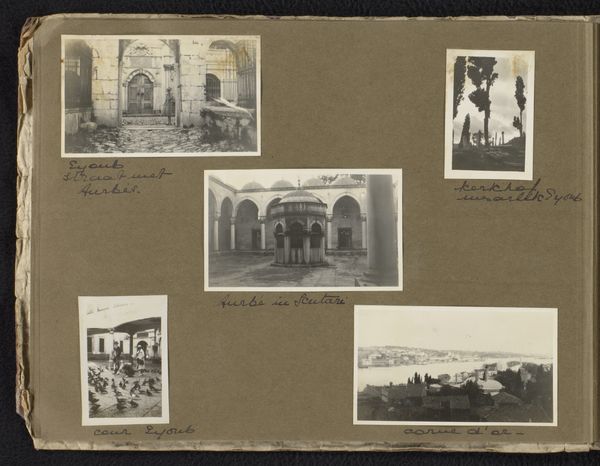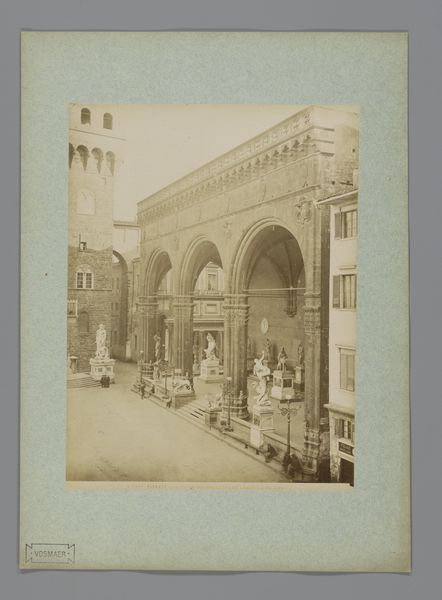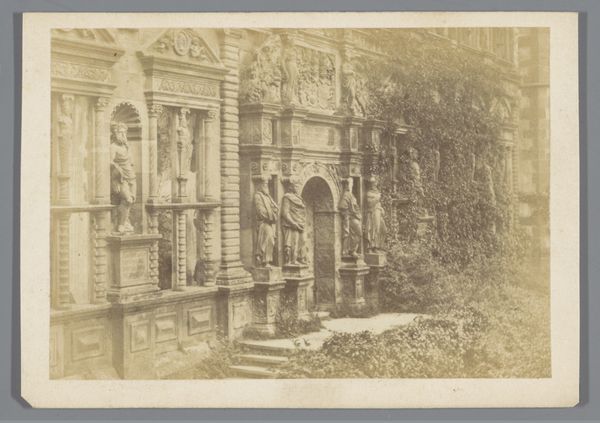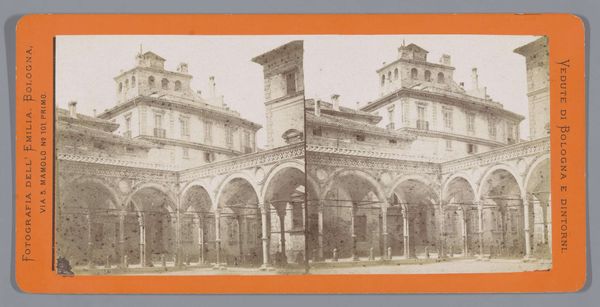
Dimensions: height 88 mm, width 177 mm
Copyright: Rijks Museum: Open Domain
Editor: This is "Menigte mensen bij de Heilig Grafkerk, Jeruzalem" - a photograph from sometime between 1900 and 1905 by an anonymous photographer. The mass of people really draws me in. What can you tell me about it? Curator: This stereograph gives us insight into the popular consumption of religious sites at the turn of the century. Consider how the publisher, Underwood & Underwood, capitalized on burgeoning tourism and the desire for immersive experiences. They mass-produced these images for a global audience. Editor: So, it's as much about tourism as it is about religion? Curator: Precisely! The image becomes a commodity, a souvenir of sorts. Note the strategic framing – the Church is grand, but the focus is really on the teeming crowd. The people become a spectacle. Why do you think that is? Editor: Perhaps the sheer volume of people adds to the gravitas? The feeling of pilgrimage or religious importance for potential consumers back home? Curator: Yes, absolutely! And think about who had access to this image. Was it accessible to those in the crowds depicted, or was it marketed toward Western audiences, shaping their perception of the Holy Land and its inhabitants? Consider how the availability and cost influenced accessibility. Editor: That's a great point! It makes me think about the power dynamics inherent in the image-making process. It seems that photography itself has political agency. Thank you for sharing your wisdom and experience. Curator: Likewise, I find thinking about mass audiences forces me to be much more alert to my assumptions!
Comments
No comments
Be the first to comment and join the conversation on the ultimate creative platform.

